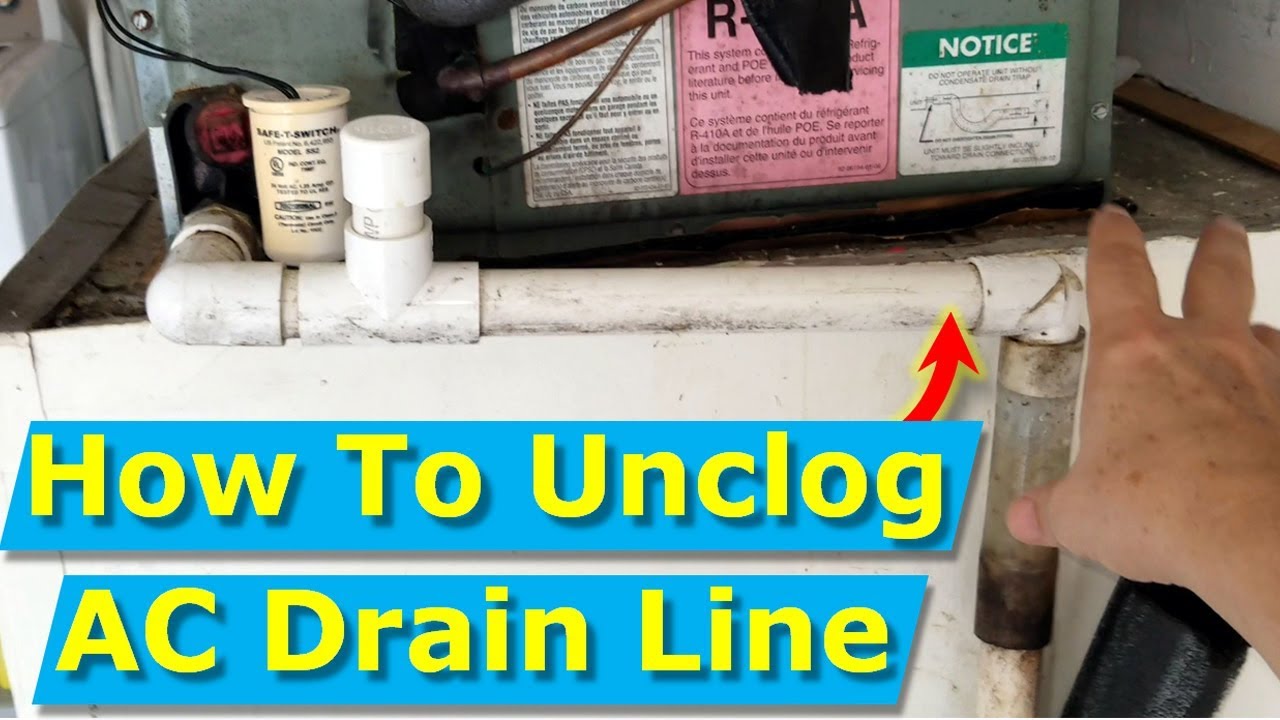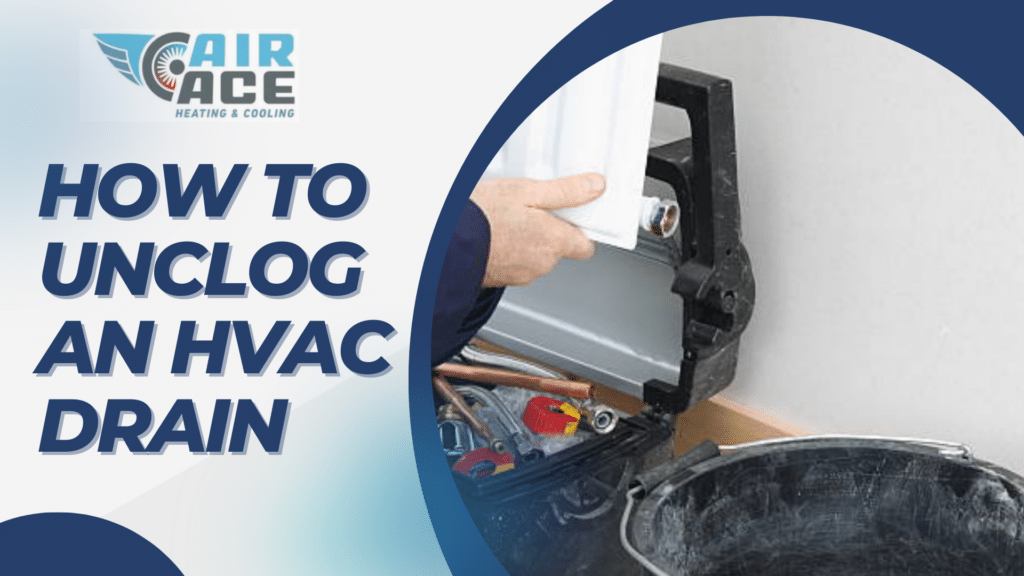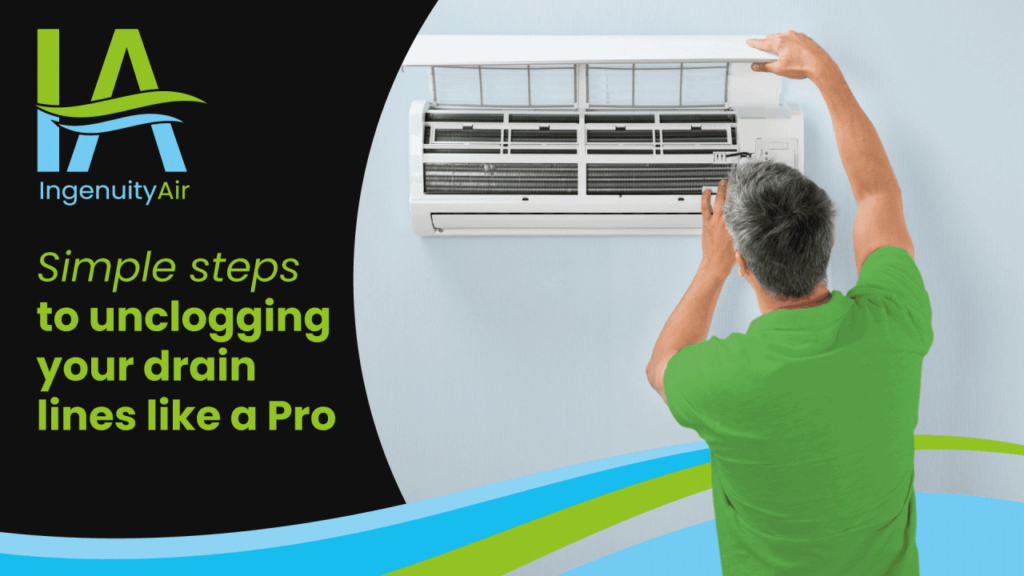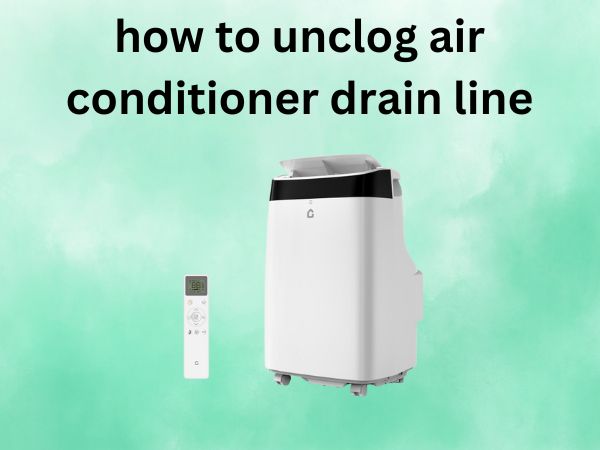How To Unclog Air Conditioner Drain

Is Your Air Conditioner Draining Properly? A DIY Guide to Clearing Clogs
A clogged air conditioner drain is a common problem that can lead to water damage, mold growth, and reduced cooling efficiency. Luckily, it's often a fix you can tackle yourself. This guide provides step-by-step instructions to help you unclog your AC drain, along with safety tips and when to call a professional.
Understanding the AC Drain System
Your air conditioner creates condensation as it cools the air. This condensation needs to go somewhere, and that's where the drain line comes in. The drain line typically runs from the indoor unit (usually in your attic, basement, or closet) to an outdoor drain, a floor drain, or a condensate pump. Algae, mold, dust, and debris can build up in the drain line, eventually causing a blockage. Recognizing the signs of a clog early can save you from major headaches down the road.
Signs of a Clogged AC Drain Line
- Water Leaking: Near the indoor unit, in the drain pan, or outside where the drain line exits. This is often the first and most obvious sign.
- Musty Odor: A damp, musty smell coming from your vents or near the indoor unit.
- AC Shutting Off: Your AC might shut off automatically due to a safety float switch that detects standing water.
- Visible Mold or Algae: Around the drain pan or drain line.
- Standing Water: In the drain pan beneath the indoor unit.
Safety First
Before you start any work on your air conditioner, take these precautions:
- Turn Off the Power: Disconnect the power to the AC unit at the breaker box. This is crucial for preventing electrical shock.
- Wear Gloves: Protect your hands from mold, algae, and other contaminants.
- Eye Protection: Wear safety glasses to prevent debris from splashing into your eyes.
- Work in a Well-Ventilated Area: Especially when using cleaning solutions.
Tools and Materials You'll Need
- Wet/Dry Vacuum: A must for clearing stubborn clogs.
- Plumber's Snake (Drain Auger): For breaking up clogs in the drain line.
- Stiff Brush: For cleaning the drain pan.
- Bleach or Vinegar: For flushing the drain line and preventing future clogs.
- Funnel: For pouring liquids into the drain line.
- Screwdriver: To access the drain line or condensate pump (if applicable).
- Towels or Rags: To clean up spills.
- Bucket: To catch any water that might spill.
Step-by-Step Guide to Unclogging Your AC Drain
Step 1: Locate the Drain Line
Find the drain line near your indoor AC unit. It's usually a PVC pipe, typically ¾ inch in diameter. It will likely be located near the drain pan.
Step 2: Locate the Drain Pan and Clear Standing Water
Locate the drain pan beneath the indoor unit. If there's standing water, carefully remove it with a wet/dry vacuum or towels. Clean the drain pan with a stiff brush to remove any visible mold or algae. A small amount of mild bleach solution can be used, but be careful not to damage the pan. Dilute the bleach properly and rinse thoroughly.
Step 3: Vacuum the Drain Line
This is often the most effective method. Detach the drain line from the AC unit (if possible, it makes the process easier). Place the hose of your wet/dry vacuum over the opening of the drain line and seal it with your hand or duct tape. Turn on the vacuum for several minutes to suck out the clog. You might need to repeat this several times.
Step 4: Use a Plumber's Snake
If vacuuming doesn't work, try a plumber's snake (drain auger). Carefully insert the snake into the drain line and gently push it through, rotating it as you go. If you encounter resistance, don't force it. Work the snake back and forth to break up the clog. Once you've pushed the snake through the clog, remove it and clean off any debris.
Step 5: Flush the Drain Line
After vacuuming or snaking, flush the drain line with a solution of bleach and water (1 cup of bleach to 1 gallon of water) or vinegar. Use a funnel to pour the solution into the drain line. Let it sit for about 30 minutes to kill any remaining mold or algae. Then, flush the line with clean water to rinse out the solution.
Step 6: Reconnect the Drain Line
If you detached the drain line, reattach it securely to the AC unit. Make sure the connection is tight to prevent leaks.
Step 7: Test the Drain
Pour a cup of water into the drain pan and observe whether it drains properly. If the water drains quickly and completely, you've successfully unclogged the drain line. If the water still doesn't drain, repeat the steps above.
Dealing with a Condensate Pump
Some AC systems use a condensate pump to remove water from the drain pan, especially when the drain line can't rely on gravity. If your system has a condensate pump, check the following:
- Check the Pump Reservoir: Make sure the reservoir isn't overflowing.
- Clean the Pump: Remove the pump cover and clean out any debris inside.
- Check the Float Switch: The float switch activates the pump. Make sure it's moving freely.
- Test the Pump: Pour water into the reservoir to see if the pump activates and removes the water.
If the condensate pump isn't working, it may need to be replaced. Consider calling a professional for this repair, as it involves electrical components.
Preventing Future Clogs
Prevention is key to avoiding future drain line clogs. Here are some tips:
- Regular Flushing: Flush the drain line with a cup of vinegar every 2-3 months to prevent buildup.
- Clean the Drain Pan: Periodically clean the drain pan to remove any algae or mold growth.
- Install a Drain Line Cap: A drain line cap can help prevent debris from entering the drain line.
- Professional Maintenance: Schedule regular AC maintenance with a qualified HVAC technician.
When to Call a Professional
While many AC drain clogs can be resolved with DIY methods, some situations require professional help:
- Persistent Clogs: If you've tried the above steps and the drain line is still clogged.
- Difficult Access: If the drain line is difficult to reach or located in a confined space.
- Electrical Issues: If you suspect electrical problems with the AC unit or condensate pump.
- Refrigerant Leaks: If you suspect a refrigerant leak (you might notice a hissing sound or a sweet, chemical smell).
- Complex Repairs: If the AC unit requires more complex repairs beyond a simple drain clog.
Estimated Costs
Here's a rough estimate of costs associated with AC drain repairs:
- DIY Unclogging: $10 - $30 (cost of supplies like vinegar, plumber's snake, etc.)
- Professional Drain Cleaning: $75 - $200
- Condensate Pump Replacement: $150 - $400 (including labor)
- Major AC Repairs: $300 - $1000+ (depending on the complexity of the repair)
These are just estimates, and the actual cost may vary depending on your location and the specific issue. Always get a quote from a qualified HVAC technician before authorizing any repairs.
Conclusion
Unclogging your AC drain line is a relatively simple task that can save you money and prevent water damage. By following these steps and taking preventative measures, you can keep your AC system running smoothly. Remember to prioritize safety and don't hesitate to call a professional when needed. Keeping your air conditioner running efficiently is important for maintaining a comfortable and healthy home. Ignoring a clogged drain line can lead to more serious and costly problems down the road. Perform routine maintenance like flushing the drain line with vinegar to prevent blockages.










